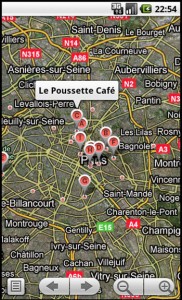This article is about a social-based mobile application designed to analyse the user’s messaging activity to identify the user’s closest social contacts.
The main purpose of that mobile application maybe is not too similar to our project but it examines social concepts that we should consider as well. For instance, people make judgments about whom to share information with based more on the identity of the recipient of the information than on the situation within the information was sought. The users can be associated using their given preferences thus creating their own social group. Therefore, it would be great to contain such rules in our application improving the social interaction of all involved users.
Several online social networking applications support users adequately in staying connected with a group of people. The ability to make users to stay in touch is one of the most important factors which increases the total interactivity and improves the popularity of a social application. As a result, users will post comments and rate on items continually thus providing a closer and more confident view for each stored product. Moreover, the information given by a user will be ranked and commented by other users in order to show how accurate their own descriptions are.
Additionally, Friendlee’s users can easily share key aspects of her context such as their location at different granularities (country, city or GPS-based street address) and status (e.g available). Such ambient awareness of people’s closest connections helps them feel emotionally close and also facilitates communication. To protect privacy, people have access to this context-sharing functionality only for a selected group of users.
While browsing a friend’s connections, people also see their preferred businesses, getting implicit recommendations about e.g. the dentist their friend likes to go to. In addition, Friendlee allows users to search their social network for people and businesses. Search results are ranked by social distance from the user. Obviously, that feature can be used in the terms of our mobile’s functionality. For example, recommendations will be made according to similar preferences of users that have already interested in a same category of products.

Reference: Ankolekar, A., Szabo, G., Luon, Y., Huberman, B.A., Wilkinson, D., Wu, F.: Friendlee: A Mobile Application for Your Social Life. In: 11th International Conference on Human-Computer Interaction with Mobile Devices and Services, Article No. 27 (2009)
Available: http://www.hpl.hp.com/research/scl/papers/friendlee/friendlee-old.pdf

